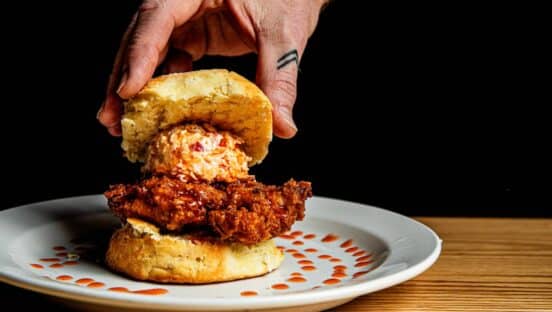CEO Michael Osanloo wants to be clear—Portillo’s does take price, but it’s never going to be the first to do so.
The crux of the fast casual’s strategy is to lag behind inflation and competitors. The chain increased prices by 1.5 percent and 3.5 percent during Q1 and Q2 respectively, and added another 3 percent hike in mid-October. These jumps, in combination with 2021 actions, resulted in an effective increase of 8.2 percent in Q3 year-over-year and 7.4 percent year-to-date.
“The power of our value proposition is especially apparent during times of economic uncertainty,” Osanloo said during the company’s Q3 earnings call. “Our guests expect a high-quality meal at a great price point. This is something we carefully protect. So we’ve surgically taken price across our menu to keep up with inflationary trends, while ensuring our guests feel that relative value in the quality and abundance of our food.”
Osanloo said the plan is working as evidenced by same-store sales rising 5.8 percent in the third quarter. On a three-year basis, comps grew 10.7 percent, in line with the chain’s long-term annual target of low single digits. In addition, guest satisfaction continued to trend higher in Q3, and value scores were the best they’ve been in three years. Guest count, calculated by the number of sandwiches and entrée salads sold in a quarter, saw a slight 0.1 percent increase. An impressive feat considering it comes “at a time that I think has been very, very challenging for restaurant industry in general,” Osanloo said. It’s an improvement from the 1.9 percent downturn in the second quarter.
The CEO noted that having a sharp value proposition helps Portillo’s maintain repeat visits from its ultra-heavy and heavy users, which the chain relies heavily on. But at the same time, the company doesn’t want its marketing hook to be “hey, we’re cheaper than everyone.” Osanloo knows there’s less expensive quick-service restaurants out there, and he’s fine with that.
“Our marketing hook is we have amazing delicious food,” the CEO said. “We have an unbelievable guest experience. Oh, and then by the way, it’s an incredible value proposition that will keep you coming back for more. So we like to hook them with delicious food, great experience, and then keep them coming back with both those things as well as great value.”
READ MORE: The Heart of Portillo’s: How a People-First Approach Built an Icon
Portillo’s ended Q3 with an AUV of $8.4 million, one of the highest in the quick-service segment, and restaurant-level EBITDA margin was 22.6 percent. Osanloo attributed these figures to a couple of sources. The CEO said restaurants are being careful about what makes sense in the kitchen. For example, finding a supplier that can provide pre-sliced red onions or reconfiguring some stores to remove salad prep from the main line. It’s also about high-quality workers, who were rewarded with another round of pay increases in the third quarter. Staffing levels are now over 100 percent, and turnover is still 20-30 percentage points better than the industry average.
Labor costs were 25.9 percent in Q3, a decrease from 26.8 percent in the prior-year quarter. The drop was driven by an increase in average check and operational efficiencies, partially offset by labor inflation.
“Tenured employees, seasoned people tend to be faster. They tend to work better,” Osanloo said. “They tend to work cross-functionally better, especially in our environment. So there is definitely, definitely a strong benefit to improve turnover trends and all the training that we’ve been doing and having engaged team members. So that’s a big part of it.”
In terms of development, Portillo’s finished the quarter with 71 restaurants. An outlet in Schereville, Indiana, is scheduled to open in the next couple of weeks. The plan is to open four more stores across the Sunbelt, including West Kissimmee, Florida; The Colony, Texas; and Tucson and Gilbert, Arizona. Because of issues with permitting, these stores were clustered together in the fourth quarter, and there is a chance that one of them might slide into 2023.
To help with rising construction costs, Portillo’s is testing what it calls Kitchen 23—a more efficient back-of-house configuration with better labor utilization and equipment costs. It will be piloted in 2023 builds, which will pop up in Texas (three to five), Central Florida (three to four), Arizona (one to two), Chicagoland (one to two), and Michigan (one to two). The chain is also considering value engineering boxes and rightsizing the dining room amid growing off-premises sales.
“In terms of the build cost, my expectation is that we will continue to get the returns that we talked about a year ago during the IPO process, right?,” said CFO Michelle Hook. “And so yes, the equation has changed slightly in the current environment where your build costs are higher, but I expect that we’re going to continue to generate the top lines to get the returns that we discussed back then. When you look at by year three, getting into that low 20 percent margin profile is my current expectation as we continue to build new restaurants. And as you know, we have a very rigorous process that each new restaurant goes through, through our real estate committee. And I will not sign off, and I know Michael will not sign off, on any restaurant build that does not deliver those returns.”
Portillo’s revenue increased 9.5 percent to $151.1 million in the third quarter. Costs of good sold increased to 35.3 percent compared to 32.1 percent in Q3 2021. This was driven by 15.4 percent inflation in commodities, particularly beef and chicken. Hook expects commodity pressure to remain in the 13-15 percent range in the fourth quarter.





